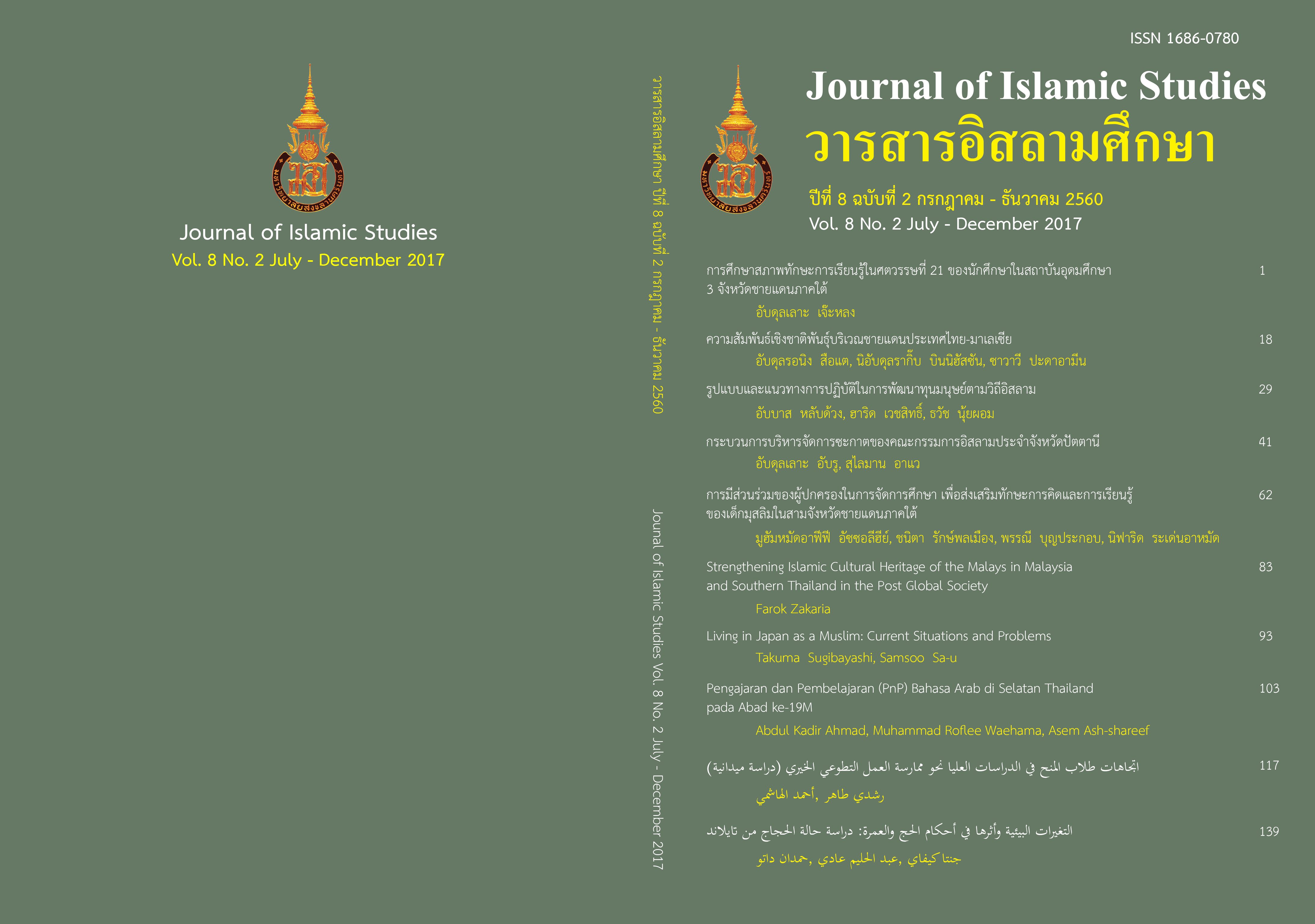Ethnic Relations in the Border of Thailand-Malaysia
Keywords:
Ethnic Relations, Border, Thailand, MalaysiaAbstract
The objectives of the research on Ethnic Relations in Border of Thailand – Malaysia are to study the process of cultural assimilation and acceptance of culture, polity, education, and the impact of ethnic relations on the stability, security and peace of Thailand –Malaysia border areas. The research methodology adopted in this research are direct observation, focus group discussion, and interview. with the Malay Muslim and Thai Buddhist communities of Thailand–Malaysia border areas. The findings of this research are as follows ; a) The relations between Thai Buddhist and Malay Muslim have been generated between them in certain aspects such as food, language in daily life and inter-ethnic marriage that has led to their mutual understanding and cooperation. b) The political relations are different in various levels namely, more positive and cooperative in political activities at local level than national one. c) Education can be an important part in building the two ethnic communities. At kindergarten level the inculcation of bilateral relation between the two ethnic communities is the best in the sense that it can be easier to make way for their intimate friendship and mutual cultural acceptance in the future. At graduate level, education is able to bring a high level inter-ethnic relations between the two groups into existence. It can also create the sense of responsibility for them and their societies to understand their ways of life better that can further help widen their vision and apply various sciences which they have learnt in developing good relations between ethnic and social groups. d) The existence of prejudice still have an impact on the relationships between the two groups that has created a gap between them, hence, sometimes can make an impact on the society in that area and the security of the country at.
References
แพร ศิริศักดิ์ดำเกิง. (2546). ปฏิสัมพันธ์ระหว่างชาวมลายูมุสลิมและชาวจีนในย่านสายกลาง จังหวัดยะลา. วิทยานิพนธ์ปริญญาโท สาขามานุษยวิทยา มหาวิทยาลัยศิลปากร.
Barth, Fredrik. (1969). Ethnic Groups and Boundaries the Social Organization of Culture Difference. Second printing, Boston: Little Brown Company.
Bin Nik Hassan, Nik Abdul Rakib. (2003). Siamisation of Malay Ethnic in Southern Thailand: A case study in Bachok Distric ,Narathiwat Province., Master Thesis ,Universiti Malaya.
Eh Kan, Mek Kerin. (2001). Hubungan Etnik dan asimilsi : satu kajian kes di Kampung Tas Baling , Kedah. Academic exercise (B.A) Jabatan Sosio-Budaya Melayu, Akademi Pengaian Melayu, Universiti Malaya.
Kunthong, Chanthira. (1991). Orange Thai di Simpang Empat: satu kajian mengenai iidentiti dan hubungan etnik di perkampungan Thai di Simpang Empat, Baling Kedak. Academic exercise (B.A) Universiti Malaya.
Satha-Anand, Chaiwat. (1992). “Pattani in the 1980s: Academic Literature and Politics stories.” In Sojourn (ISEAS), 7, No. 1, (February 1992).
Downloads
Published
How to Cite
Issue
Section
License
All articles Published in The Journal of Islamic Studies are author’s opinions, and not the responsibility of the Faculty of Islamic Sciences nor the editorial board. However any citation should be referred to the journal.


